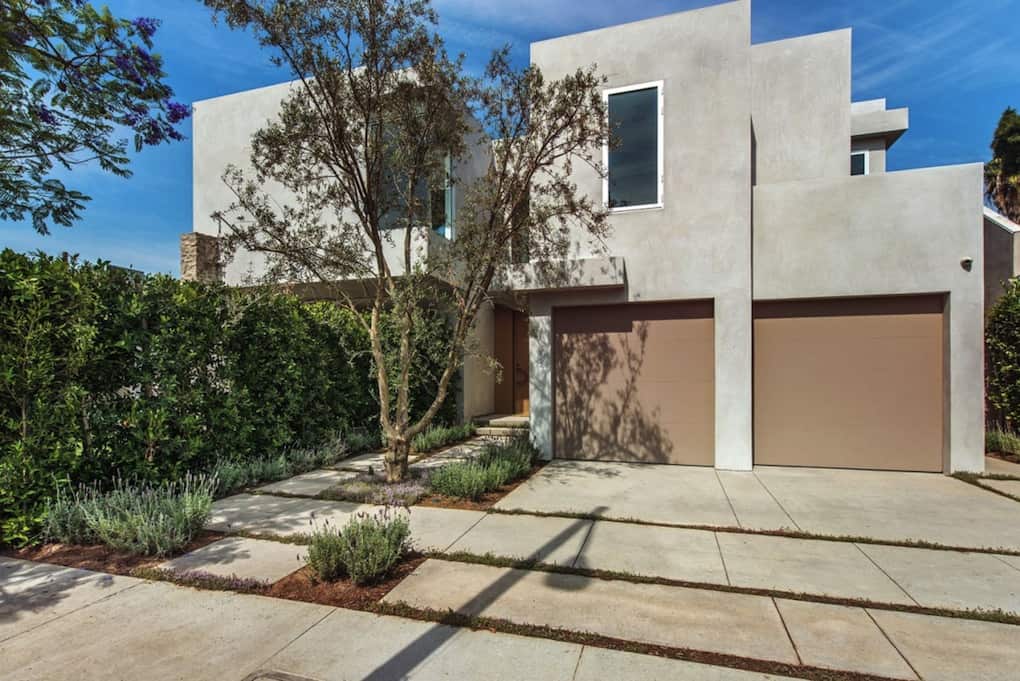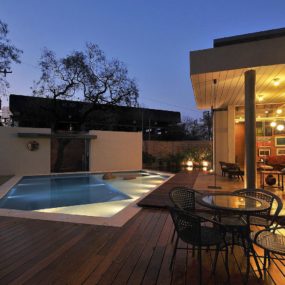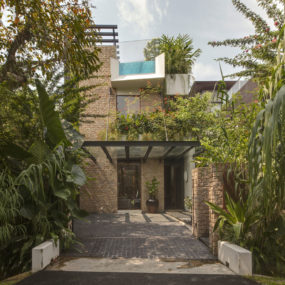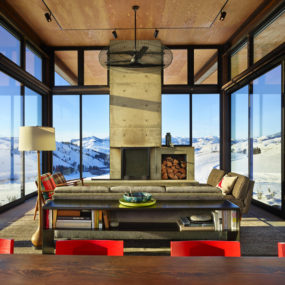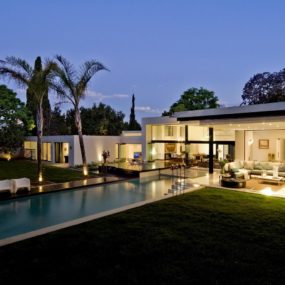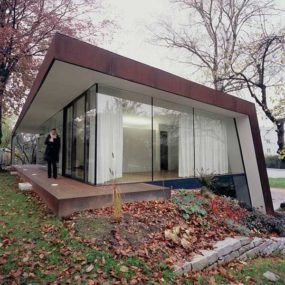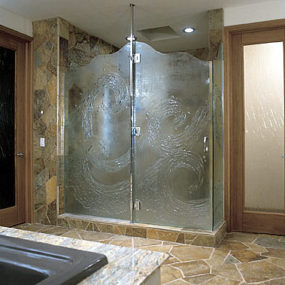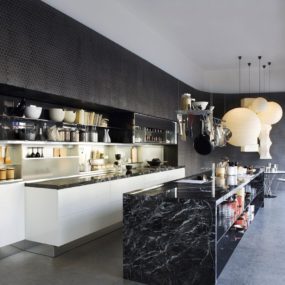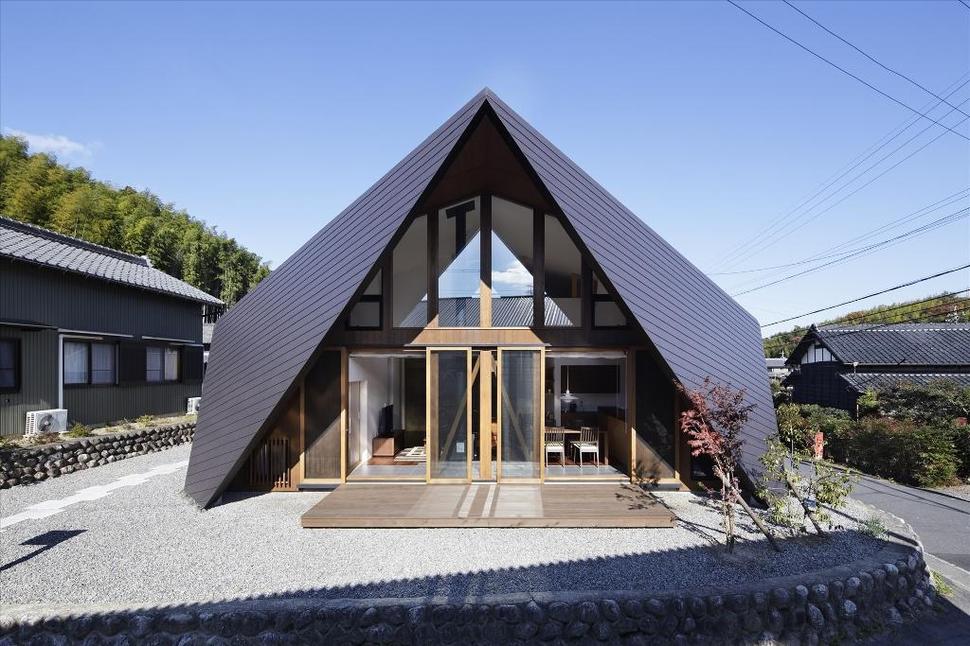
Located in Mie Prefecture, Japan in an old village surrounded by mountains, Origami house was built on a site originally owned by a young family’s Grandfather who had built a stonewall around the edge of the property from round boulders. The history and memories attached to this stonewall were a precious memory to the young property owner and with this in mind, TSC Architects chose to keep the stonework and build the home within its circumference. The new home is designed with a unusual roofline that is folded around the inner core like a sheet of origami. The Origami roof, as beautiful as it is, is also a structurally protective covering for the home, acting as both roof and sidewalls. The connection of the roof to the ground gives the home added strength, shielding it from such external forces as high winds and earthquakes.
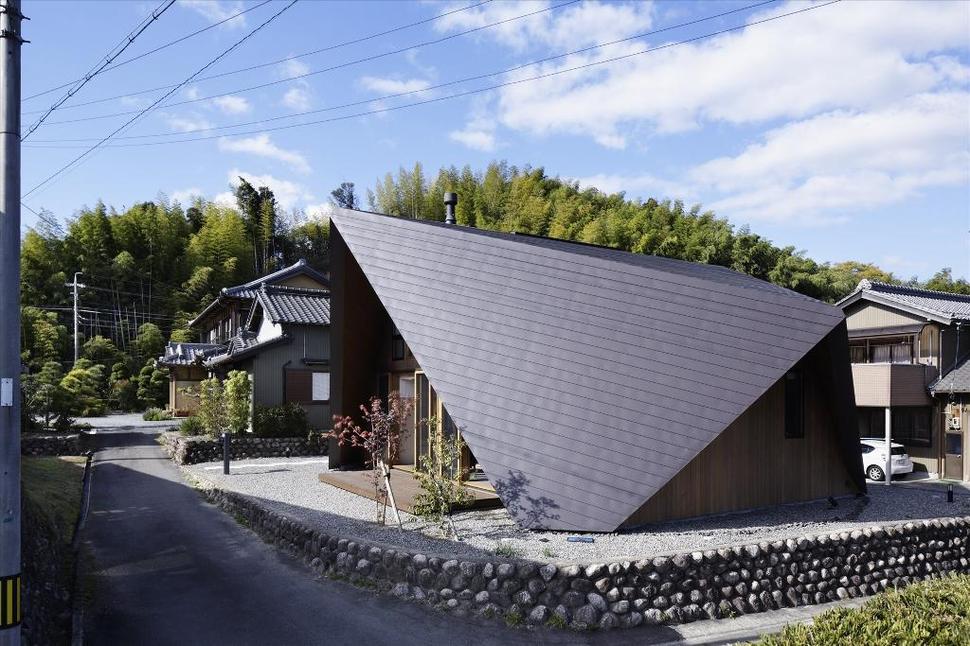
The folded roof-line reminds me of bird folding its wings over its nest to protect its hatchlings from weather variations, This visual analogy is befitting the purpose of this roof as it protects the young family within.

Using the same bird analogy, the rock wall that the grandfather built around the site becomes the edges of the nest – or in this case the edges of the corner property and as birds live within their nest, so too the young family lives within the rock frame.
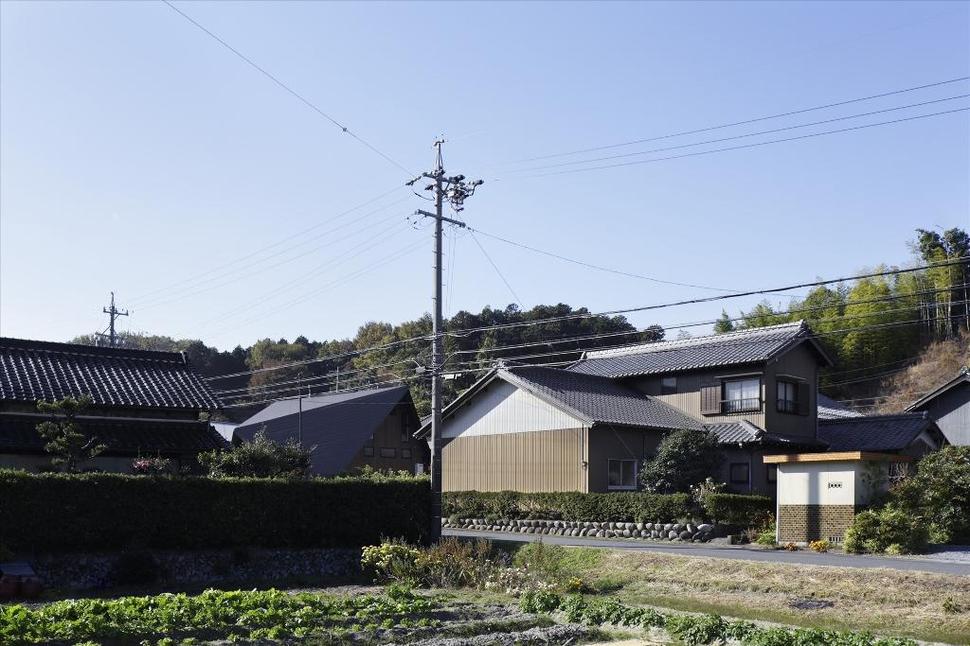
Unlike a bird’s nest that is usually hidden, Origami House is clearly visible from a distance with its unusual and non-traditional profile of roof angles.
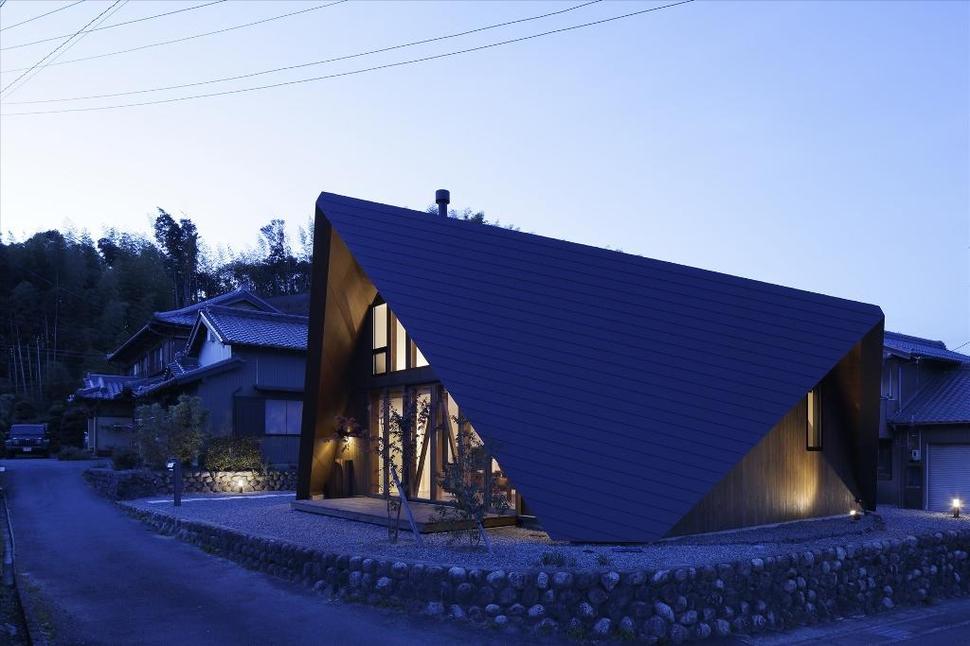
The combination of the round boulders surrounding the property and the linear lines within the angled roof planes create a beautiful abstract composition that while completely different from its neighbours, is still in harmony with the surrounding buildings.
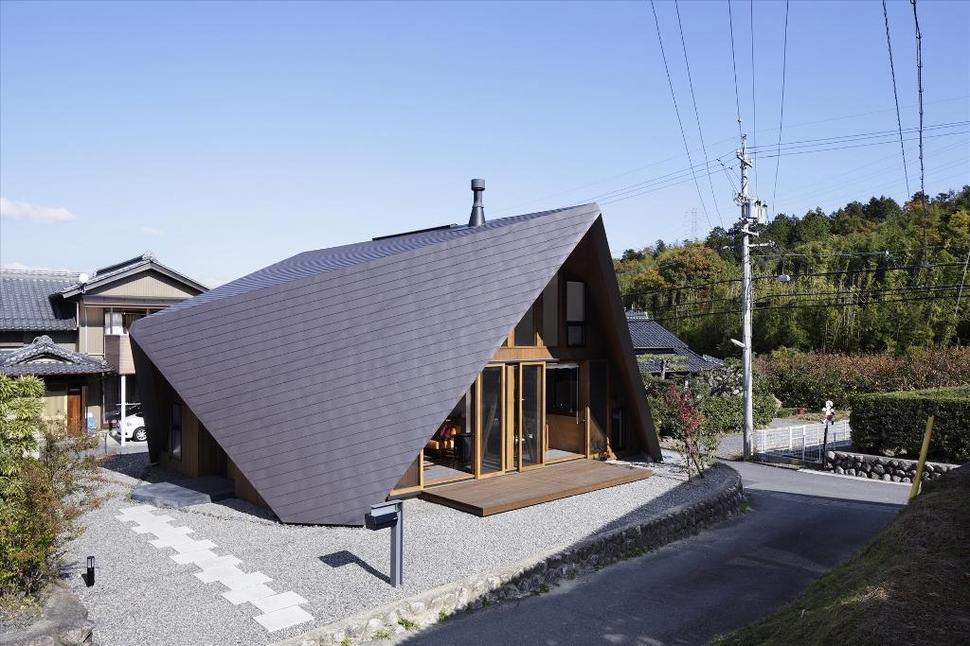
While the folds of the Origami roof are solid masses of structure, the home underneath it is filled with walls of glazings wrapped in wood, creating a warm and inviting street exposure.
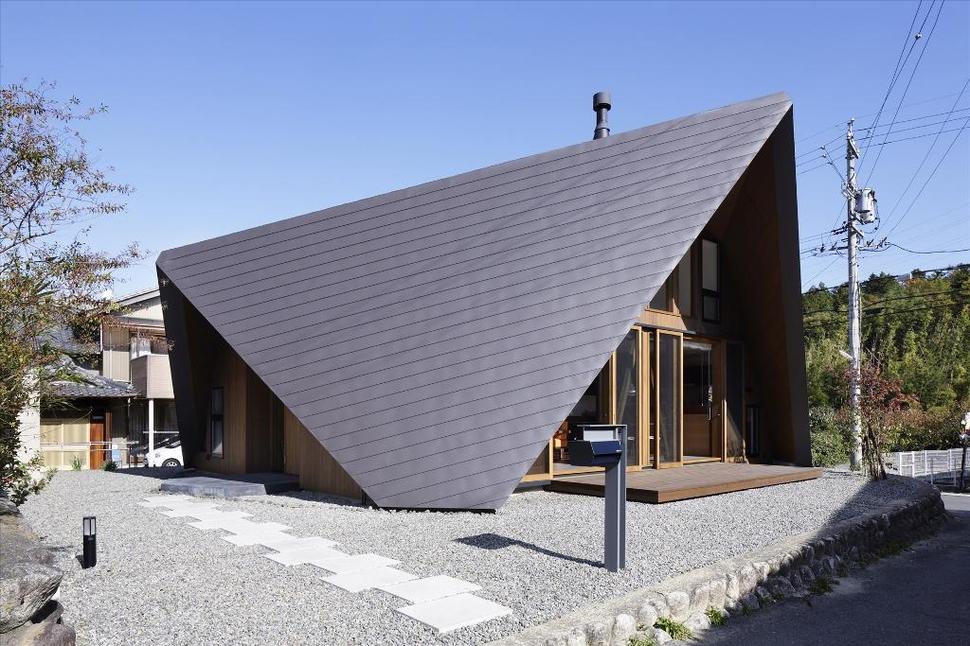
A deck in the front of the home is accessed through two pairs of wood framed glass doors that overlook the street, but this deck is for private use only, a series of staggered pavers leads from the street to the main entrance on the side of the home.

The entry has an irregular shaped concrete porch pad that stretches out to and follows the line of the roof.

The Origami roof not only dips to the ground on either side of the front facade, but also on the other two corners and in so doing it creates shelter both for the front deck and for the entrance on the side.
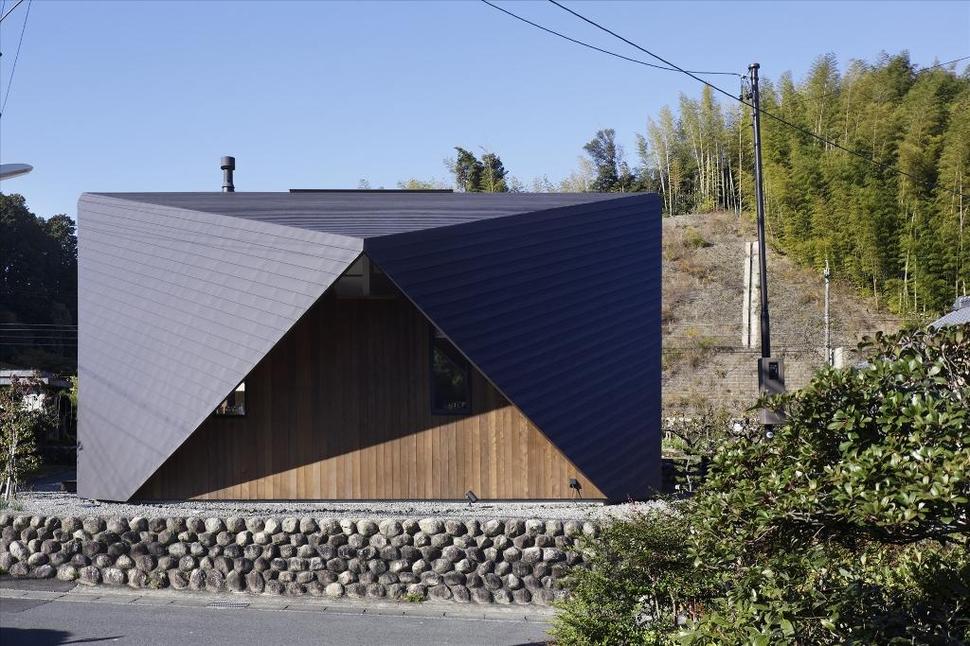
The roof-line at the back replaces the A frame appearance of the side and front with a more boxy shape
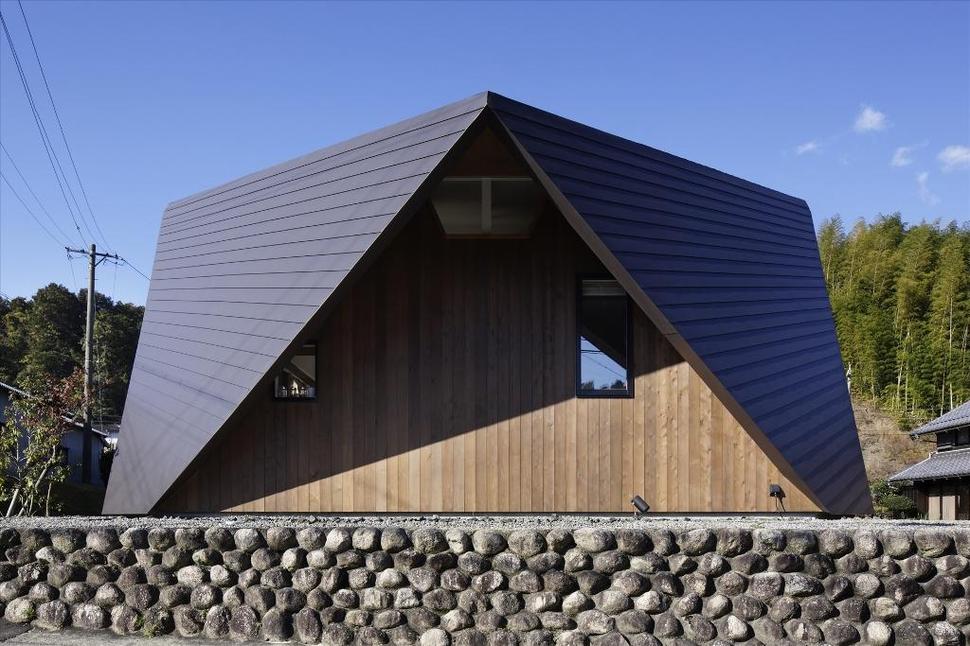
While the front of the home is covered in glazings, the back of the home is a more private facade of wood siding pierced by only 3 small windows.
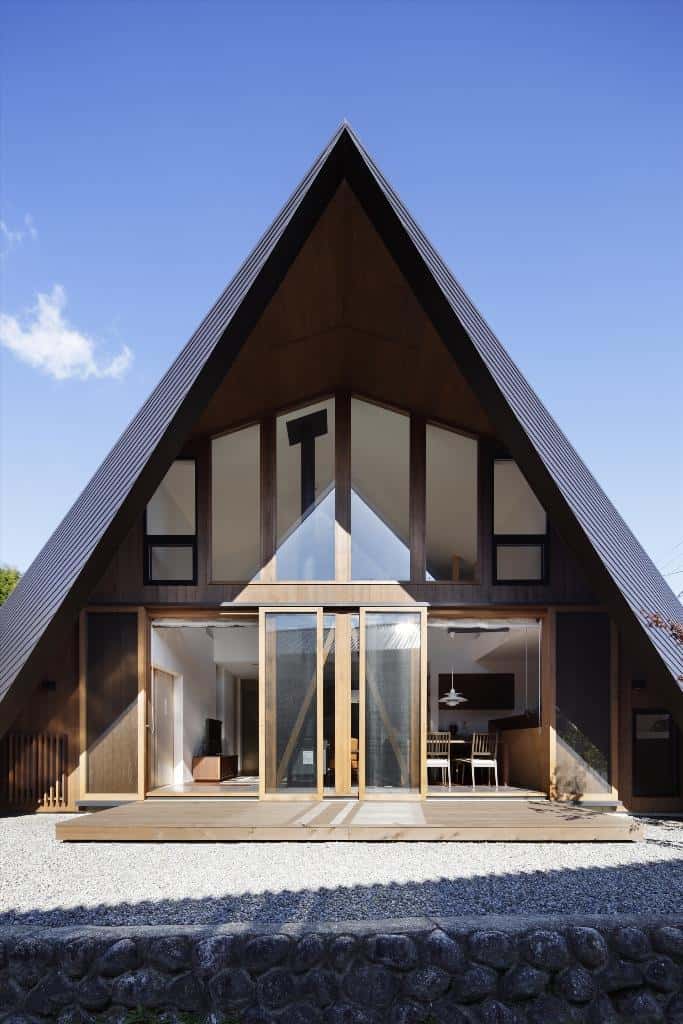
The contrast from front to back is quite remarkable, both in the profile and in the amount of glass used. One side completely private – the other completely exposing the social zone within and not only is the social zone exposed but it is also completely connected to the outdoors via the pairs of doors that can be folded open and out of the way, creating an indoor outdoor environment for those warm summer days.
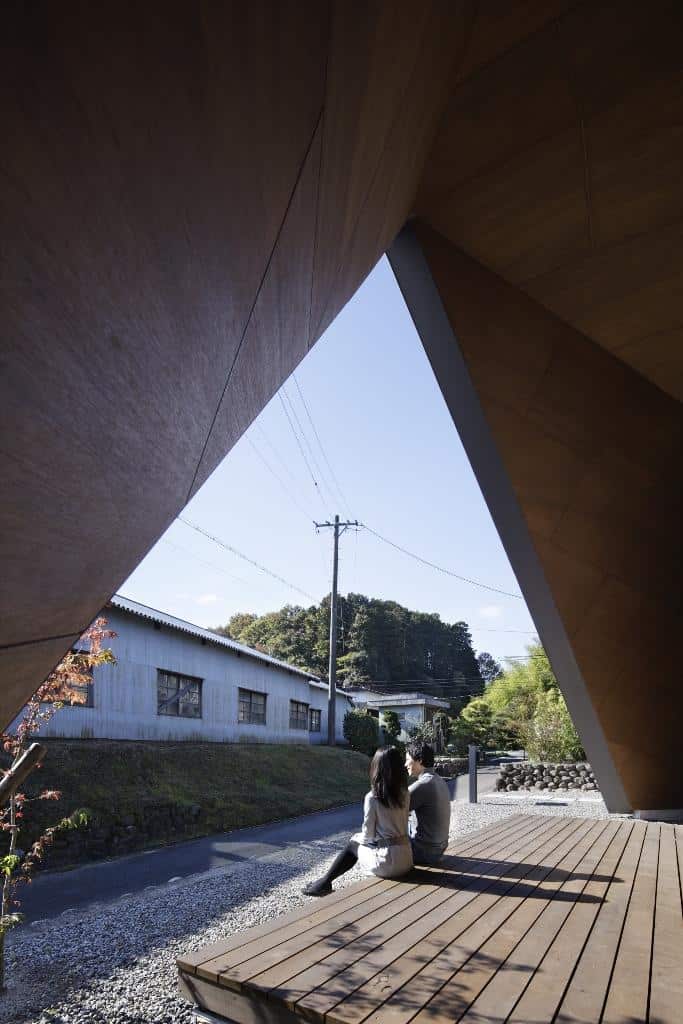
When the sun is out, the shade of the overhanging roof keeps the deck and the interior volumes cool and comfortable.
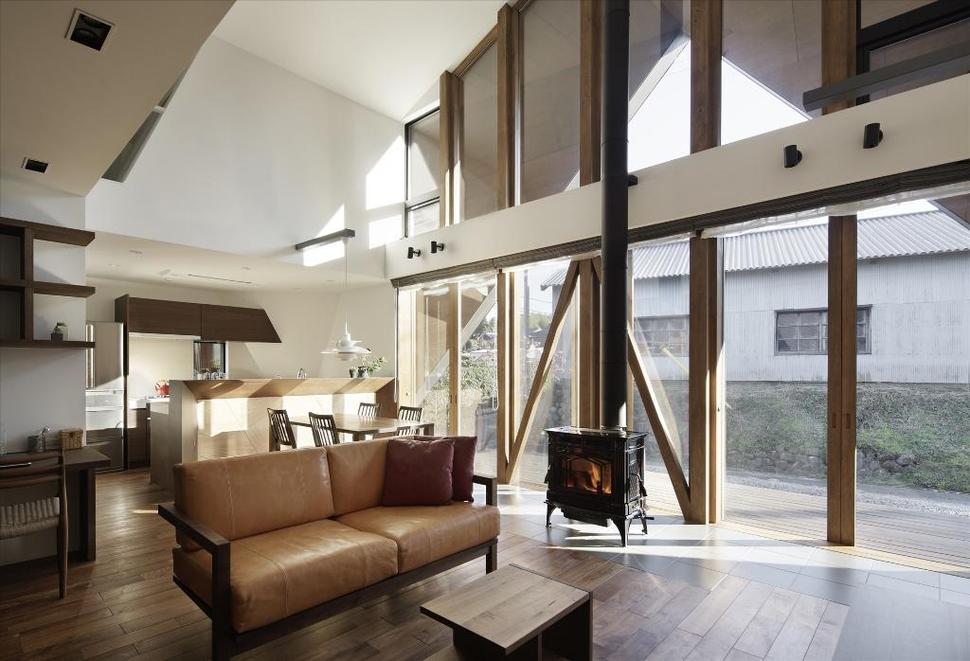
When its cool outside, the doors are closed and the fire is lit, but the connection to the street is still visually in place.
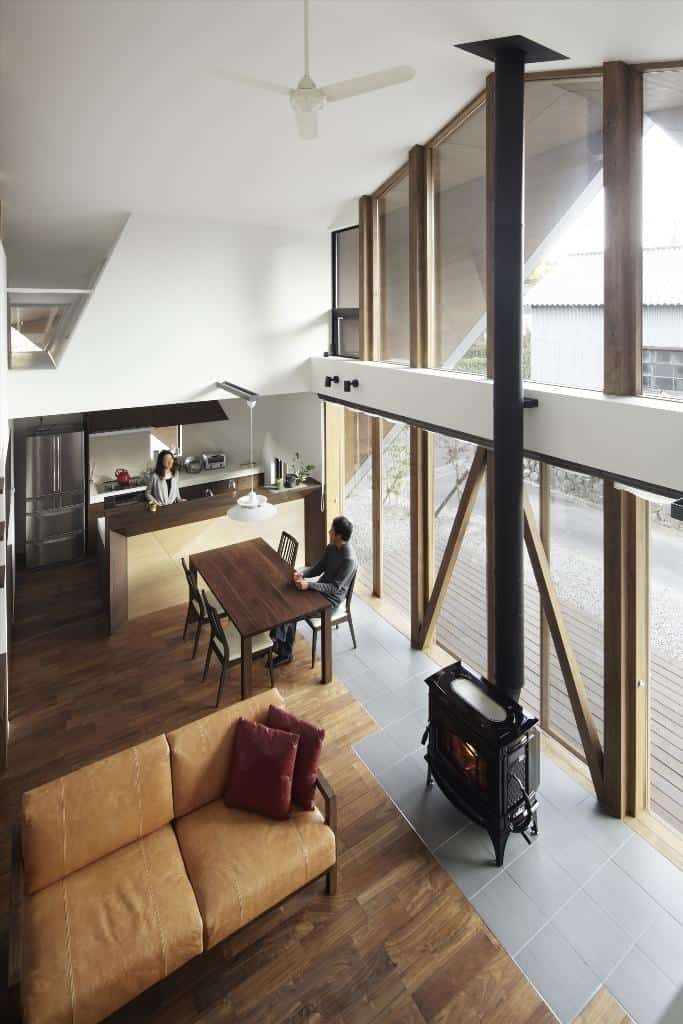
The social zone is a double volume space and since heat rises a ceiling fan is positioned to recirculate it back down.

The social zone is designed with the kitchen on one end, and the TV viewing on the other with the fireplace positioned centrally within the space
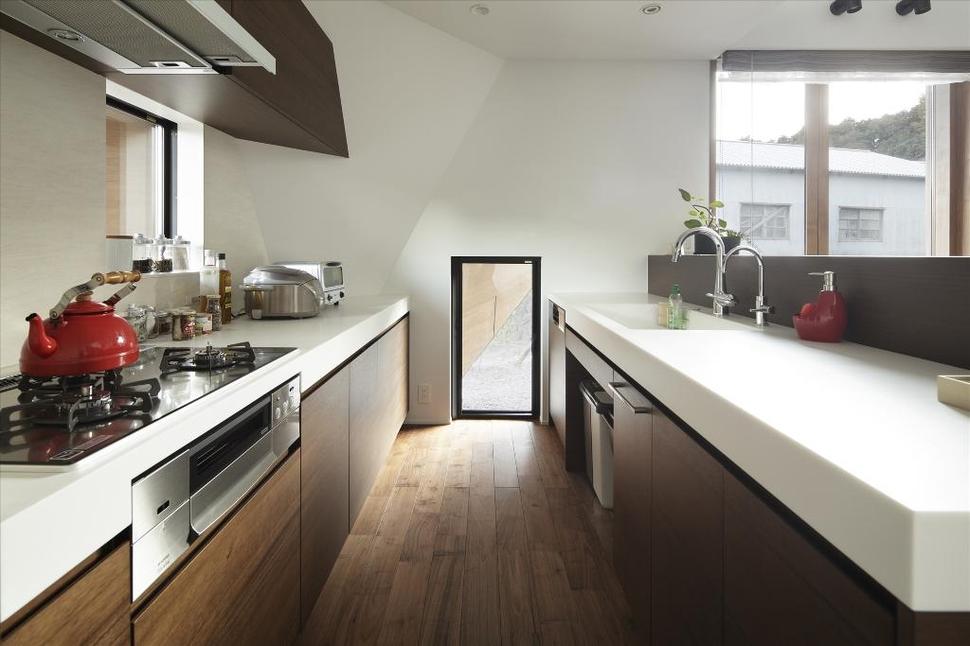
the kitchen is under the folds of the Origami roof and because of this the window at the end goes from floor to only half way up the wall. The low profile of this window adds an intimate character to the space that would be lost had it lined up with the rest of the glazings on the wall.
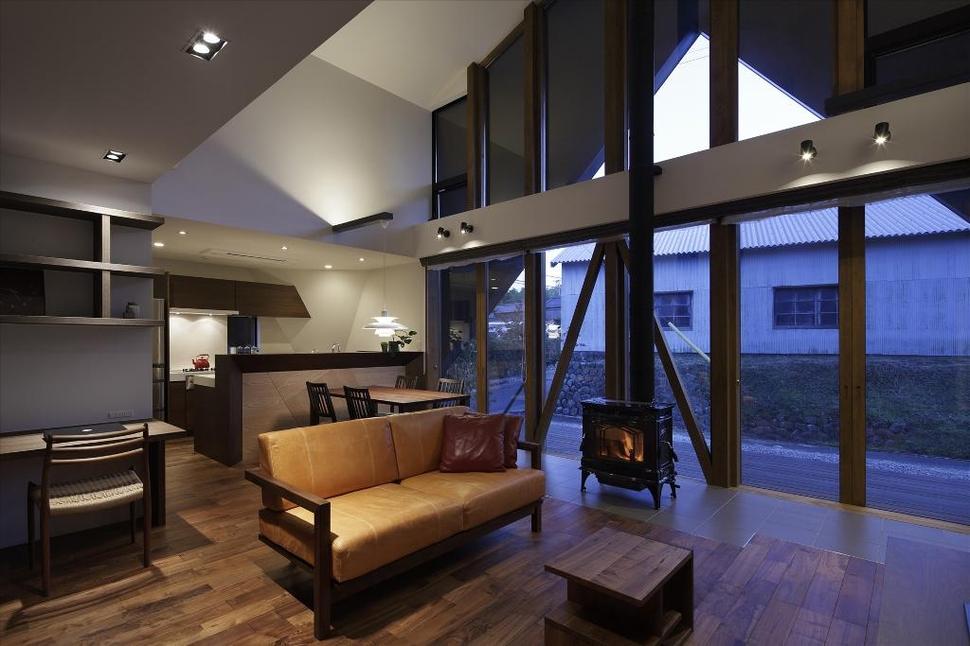
The kitchen is not double volume like the dining and living areas and instead features a drop ceiling punctuated with pot lights for task lighting. While the kitchen is open to the rest of the floor, the backsplash facing the dining room is raised high enough to create a visual block to its counters..
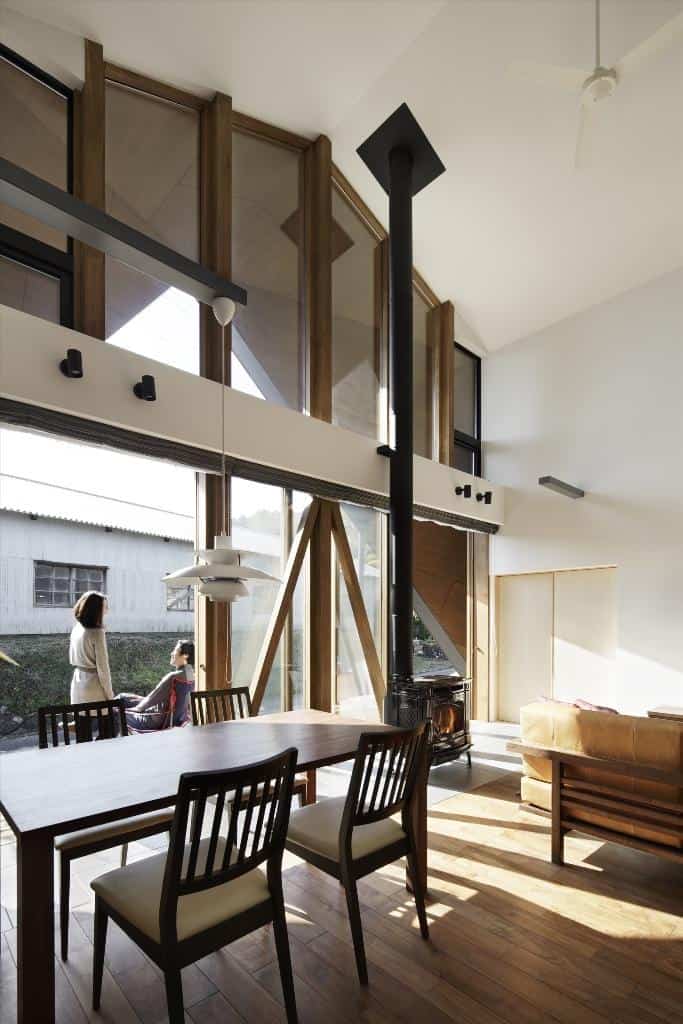
The dining area in front of the kitchen faces one of the two pairs of glass doors that opens to the deck. This means that during nice weather, the dining experience can easily be taken outside for an el fresco experience.

While the dining and living area are not large, the double height ceiling visually expands the space.

With the fireplace centrally located between the two pairs of glass doors that lead to the deck, the choice of a floor height hearth running the length of the social zone was a smart one. This way there is no chance of anyone banging into the corners of a raised hearth and the tiles do double duty as a weather safe barrier to the wood planking used throughout the rest of the space.
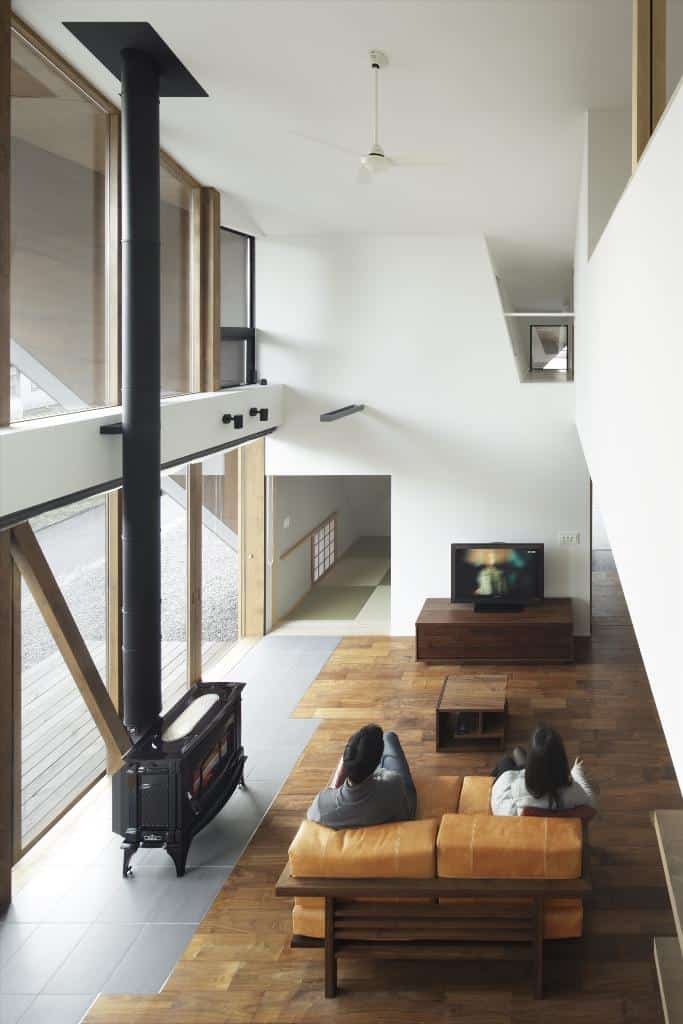
At the other end of the social zone is the TV viewing area and beyond that is a traditional Japanese room – or Washitsu – complete with Tatami mats.
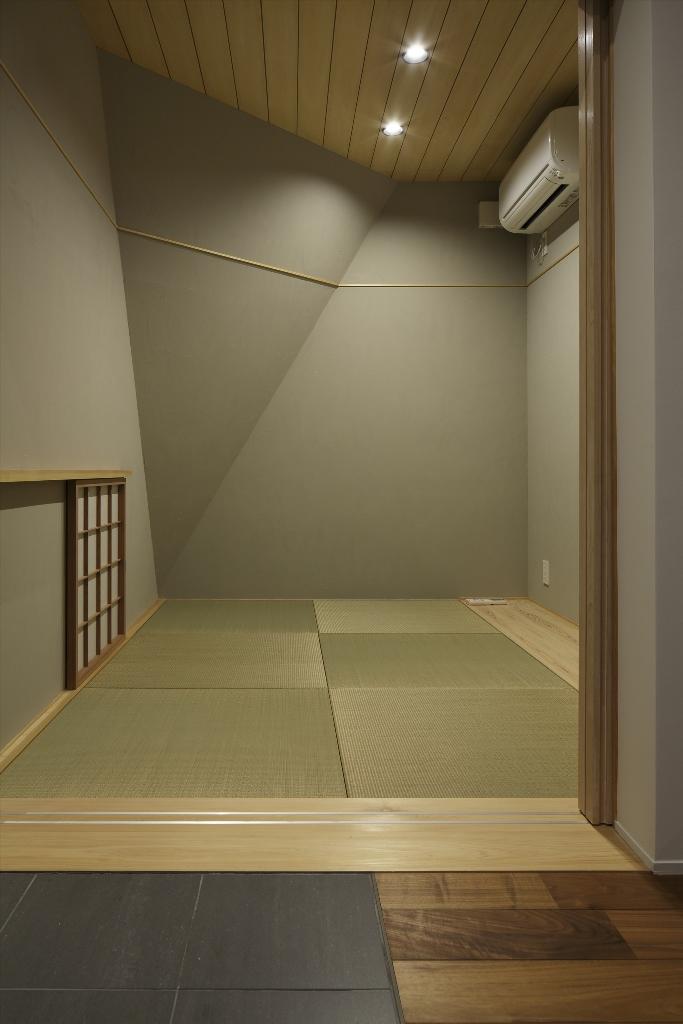
The Washitsu replaces the wood plank flooring with a wood plank ceiling and the angled end wall is part of the Origami roof where it plunges downward to meet up with the ground outside.

Beside the living and dining areas the ceiling level drops back down to a single volume and under this lowered ceiling is a small office and a hallway that leads to the private zones of the home. The architect made sure to leave a large uninterrupted wall beside the stairwell for the young family to store their bikes.
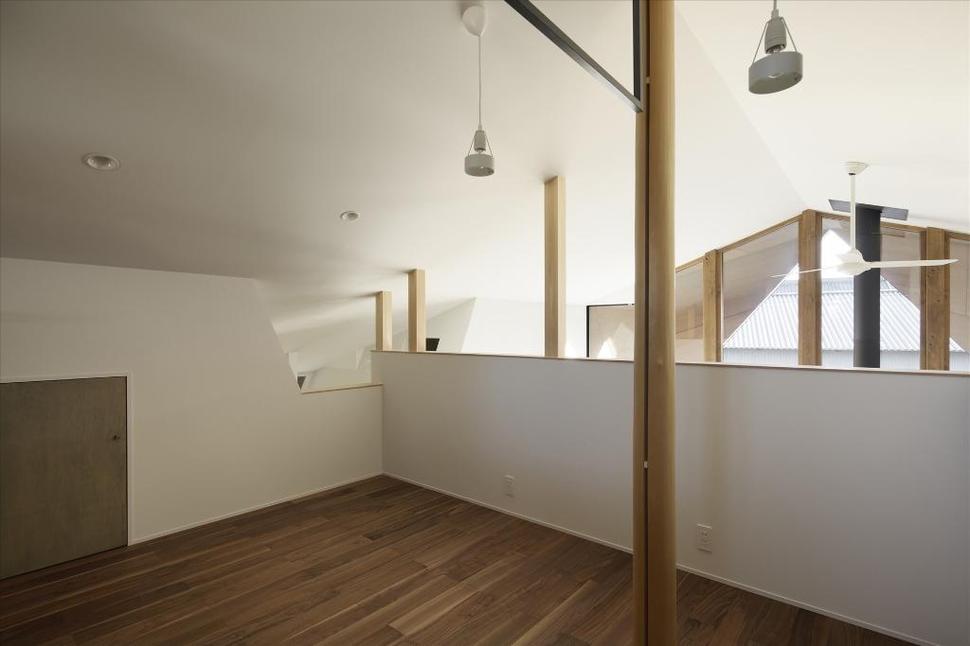
the stairwell leads up to a large open mezzanine area that overlooks the social zone below. With no full height walls in the centre of the home, the architect used clear finished posts – both round and square – to support the roof above.
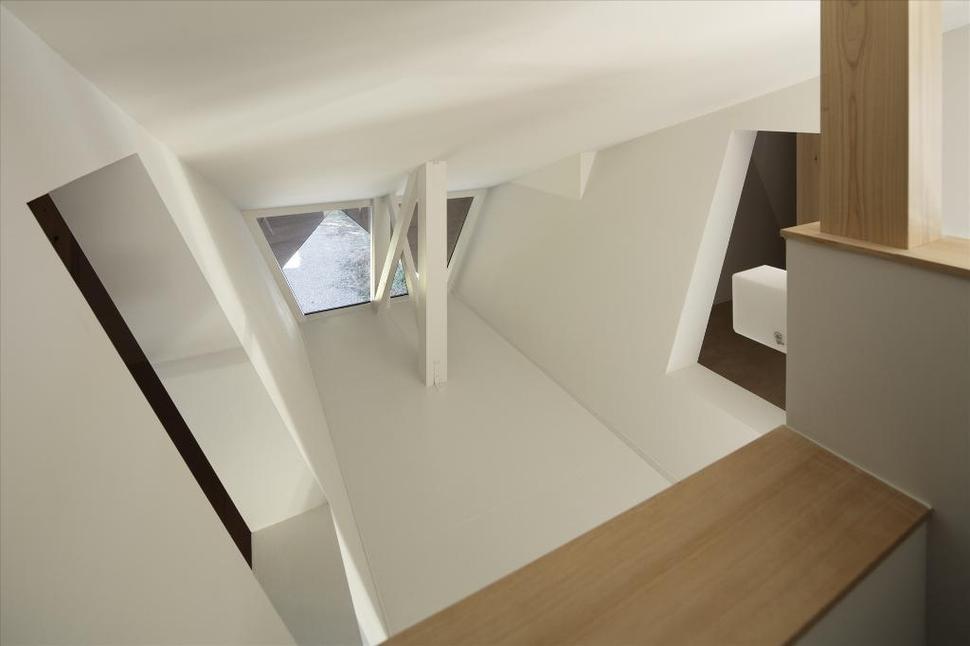
The various angles of the Origami roof creates some interesting spaces within the upstairs section of the home
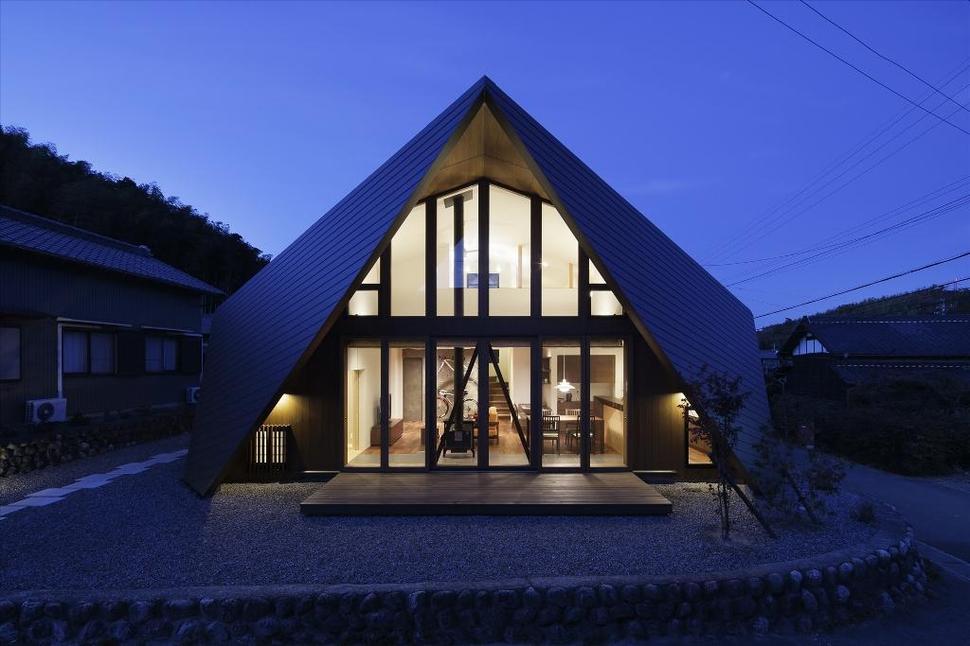
The Origami roof stands like a tent shielding and protecting the family within. Using the pre-existing rock wall built by the homeowner’s grandfather the Origami house has strong ties to the history of the town and its people while at the same time the unusual shape of the roof brings a new perspective to the traditional setting.
TSC Architects
Photography by Masato Kawano
